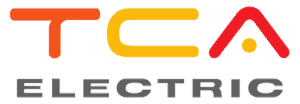When the first Tesla home charging stations hit the market, they were a major investment for many homeowners. As is typical with emergent technology, the devices tended to be expensive, while installation costs were also quite high. For those with older 100-amp electrical panels, these costs would be higher still, as the home’s panel would need a service upgrade to at least 200 amps before an EV charger could be installed.
As with many new technologies, however, things have gotten easier over time when it comes to EV charging installation. Here at TCA Electric, we’ve been installing Tesla home charging stations since the early days. And while we often hear homeowners worry about the costs of this service, we’re here to give you the good news: installing a Tesla home charger is easier than it’s ever been! How so? Let’s take a look in today’s blog post.
No 200-amp panel? No problem!
Previously, homes with a 100-amp electrical panel would almost always require a service upgrade before an electrician could install any Level 2 EV charging station. This greatly increased the overall cost of the service for homeowners. Now, however, new technologies allow for an EV charger to be installed even in homes with smaller panels!
DCC-10 load management unit
The first of these technologies is a unit called a DCC-10, a load management unit. This unit measures the amount of power used by your home and automatically cuts power to the device it’s connected to if your home’s usage reaches 80%. In other words, your Tesla home charging station will receive power at times when your home is using less power (overnight, for instance), but be powered down at times when electricity is in high demand within your household to prevent overloads.
Load miser
The other option is called a load miser. This is a unit that enables devices with high electricity demands to share power, with only one receiving power at a given time. For many homeowners, a Tesla home charging station could share power with an appliance such as a dryer or an electric oven. With a load miser, one appliance (typically not the EV charger) is given priority. This means that, if your EV charging station shares power with your dryer, your electric vehicle would charge except for when your dryer is running.
Charge smarter—and easier
While workarounds like the above have made installing a home EV charging station much easier, the devices themselves are doing their part to make things easier for EV owners, as well. One way they’ve done this is through the advent of “smart” chargers. These devices are Wi-Fi enabled, allowing EV owners to set schedules and monitor charging remotely, among other capabilities. The latest Tesla home charging station, the Gen 3 wall connector, is one of several devices with smart capabilities.
Practice makes EV charging installation perfect
In the early days, it could be difficult to find a residential electrician with EV charging experience. Now, however, more professional electricians than ever have gotten a chance to work with these technologies and install home EV chargers. Of course, this can make it trickier to find the right electrician for the job—but here at TCA Electric, we feel that competition pushes all of us in the electrical industry to provide the utmost quality of service!
TCA Electric: Experts in Tesla Home Charging Installation
At TCA Electric, we’ve always pushed ourselves to keep up with emergent technologies and devices. As a result, we’ve worked with Tesla home charging devices since the very beginning, and we’ve seen how far home EV charging technology has come over the years. If you’re the proud new owner of a Tesla or any other electric vehicle, let TCA Electric be your home EV charging partner! We have the experience, knowledge, and commitment to quality customer care necessary to help you find the perfect charging solution for your needs. Contact us today and let us show you why we’re the EV charging experts!
